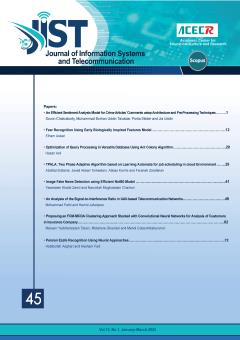Information and Communication Technology (ICT) is one of the key determinants for today’s organizational success. Therefore, companies spend a significant amount of money each year on ICT, while not being sure that they will get a good result. The purpose of this study
More
Information and Communication Technology (ICT) is one of the key determinants for today’s organizational success. Therefore, companies spend a significant amount of money each year on ICT, while not being sure that they will get a good result. The purpose of this study is to identify the dimensions and indicators of ICT performance evaluation and suggesting a model for assessing it in organizations. This research is mainly a qualitative study with a meta-synthesis approach which uses the seven-stage qualitative method of Sandelowski and Barroso to systematically review the literature to find sub-indices (codes), indices (themes) and dimensions (categories) of ICT performance evaluation. The search of scientific databases with appropriate keywords found 516 articles, among them, 89 articles were chosen finally and used for analysis. Moreover, a questionnaire has been designed and answered by ICT experts and managers to determine the importance of each of the indicators of the model. Based on data analysis, the proposed ICT performance evaluation model has three dimensions: strategic, quality, and sustainability. The strategic dimension includes indicators of organization strategy, IT strategy, and alignment. The quality dimension includes maturity, and performance indicators; and finally, the sustainability dimension includes environmental, economic, and social indicators. For each of these indicators detailed list of sub-indices (104), which are substantial for evaluation of ICT performance in organizations, were identified and explained.
Manuscript profile


